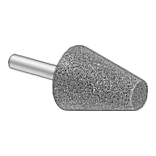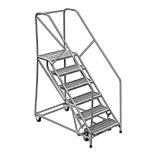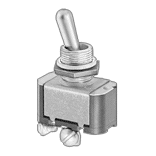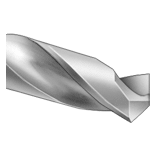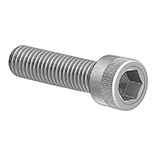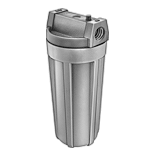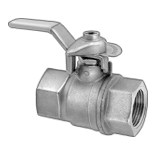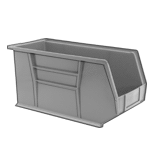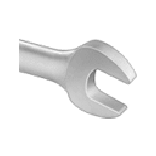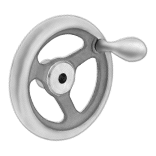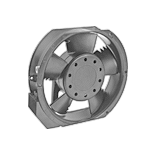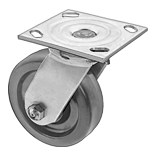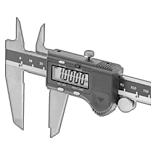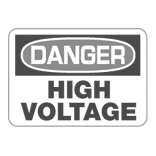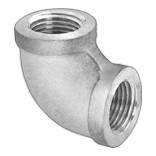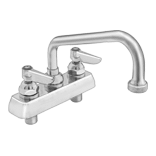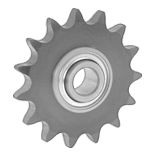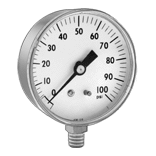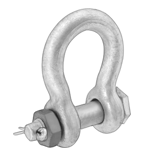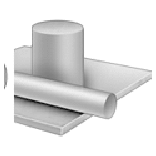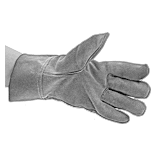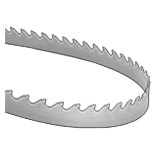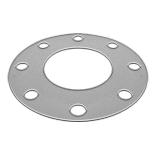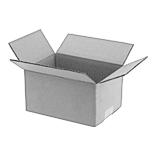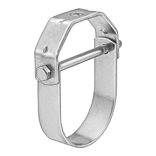About Glove Sizing
More
Coated Work Gloves
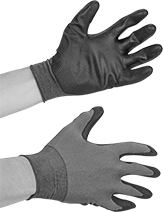
The coating on these gloves provides extra protection without limiting dexterity. It also provides a secure grip.
Nylon gloves are form fitting and offer good dexterity.
Palm-coated gloves have an uncoated back side that makes the gloves more comfortable and breathable. Textured gloves provide a better grip than smooth gloves.
Polyurethane-coated gloves are thin and lightweight. They're good for assembly work, small parts handling, and other jobs where a sensitive touch and precise handling are essential.
Use gloves with knit cuffs for a secure fit.
Vibration-Protection Open-Finger Work Gloves
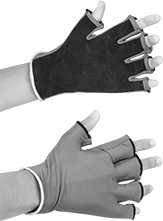
Minimize hand fatigue when using rivet guns, jackhammers, and other power tools that produce intense vibrations. These gloves have shock-absorbing padding that covers your palms and the base of your fingers, leaving your fingertips free to grip objects.
Styles B and C have gel padding on the inside of the glove. They also have a spandex backing that stretches as you move your hand.
High-Dexterity Cut- and Puncture-Protection Gloves
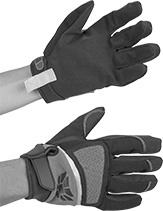
These flexible gloves combine cut resistance with a design that conforms to your hand for improved dexterity. All have reinforced palms to reduce the risk of cuts when handling sharp and pointed objects. They meet the ANSI/ISEA 105 standard, which designates levels of cut resistance based on the force needed to cut through the material of the glove using a razor blade.
Hook and loop cuffs can be adjusted for a custom fit.
TIG Welding Gloves
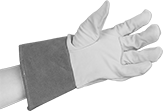
Safeguard hands from welding sparks and spatter while TIG welding. These gloves are thinner than MIG gloves, giving you more flexibility and sensitivity to handle small parts.
Goatskin gloves are made from nature's strongest leather, so they offer superior abrasion resistance.
Gloves that meet ANSI/ISEA 105 standards are rated for various forms of protection, such as resistance to cuts, abrasions, punctures, or heat. The higher the rating, the greater the protection. Gloves that cannot be sold to Canada are restricted by import regulations.
Multipurpose Welding Gloves
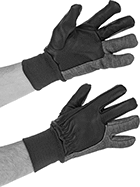
Switch between different types of welding without changing gloves. These gloves balance dexterity and heat protection, so they’re good for a variety of welding jobs.
Gloves with a reinforced side or a fabric blend pinky reduce the risk of pinky shrink, which happens when heat causes a glove’s pinky area to shrivel.
Gloves that meet ANSI/ISEA 105 standards are rated for cut or heat resistance.
Gloves that cannot be sold to Canada are restricted by import regulations.
ANSI | ||||||||||||
|---|---|---|---|---|---|---|---|---|---|---|---|---|
| Lg. | Cuff Style | Lining Material | Color | Features | Cut Rating | Conductive Heat Resistance Rating | Specifications Met | Cannot Be Sold To | Choose a Size | Pair | ||
For Stick, MIG, and TIG Welding | ||||||||||||
Goatskin Leather | ||||||||||||
| F | 10" | Knit | Kevlar Fabric | Black/Blue | Kevlar/Fiberglass/Aramid Fabric Blend Pinky, Kevlar Threads | A6 | 4 | ANSI/ISEA 105 | Canada | 0000000 | 000000 | |
Welding Sleeves

Use these sleeves alone or with gloves to protect your arms. They shield your arms from welding sparks and spatter.
Cotton-and-leather sleeves shield your hand from heat and scrapes while providing cool, lightweight protection up your arm. Sleeves with pigskin leather resist oil and water. They remain soft and flexible even after contact with water.
Static-Dissipative Gloves
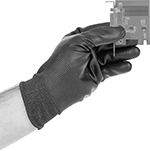
Made with conductive fibers, these gloves safely drain static electricity to prevent damage to sensitive electronic parts.
Polyurethane-rubber-coated gloves are thin and lightweight. Use them for assembly work, small parts handling, and other jobs that require a sensitive touch. They’re fully coated to keep liquids out, so your hands stay dry.
Smooth gloves are grippy enough to handle dry objects. They allow for more precise handling than textured gloves.
Gloves that meet ANSI/ISEA 105 standards are rated for various forms of protection, such as resistance to cuts, abrasions, or punctures. The higher the rating, the more protection.
Gloves that meet EN 388 adhere to European standards for resistance to abrasions, tears, cuts, and punctures. This rating is similar to ANSI/ISEA 105.
Available Sizes | |
|---|---|
| Size | Glove Size |
| XS | 6 |
| S | 7 |
| M | 8 |
| L | 9 |
| XL | 10 |
| 2XL | 11 |
ANSI | |||||||||||||
|---|---|---|---|---|---|---|---|---|---|---|---|---|---|
| Texture | Coating Coverage | Knitting Gauge | Lg. | Cuff Style | Touchscreen Compatible | Color | Surface Resistance | Abrasion Rating | Puncture Rating | Specifications Met | Choose a Size | Pair | |
Polyurethane-Rubber-Coated Nylon Fabric | |||||||||||||
| Smooth | Full | 18 | 10" | Knit | Yes | Black/Blue | 1 × 108 ohms | 3 | 2 | ANSI/ISEA 105, EN 388 (3111XX) | 00000000 | 00000 | |
